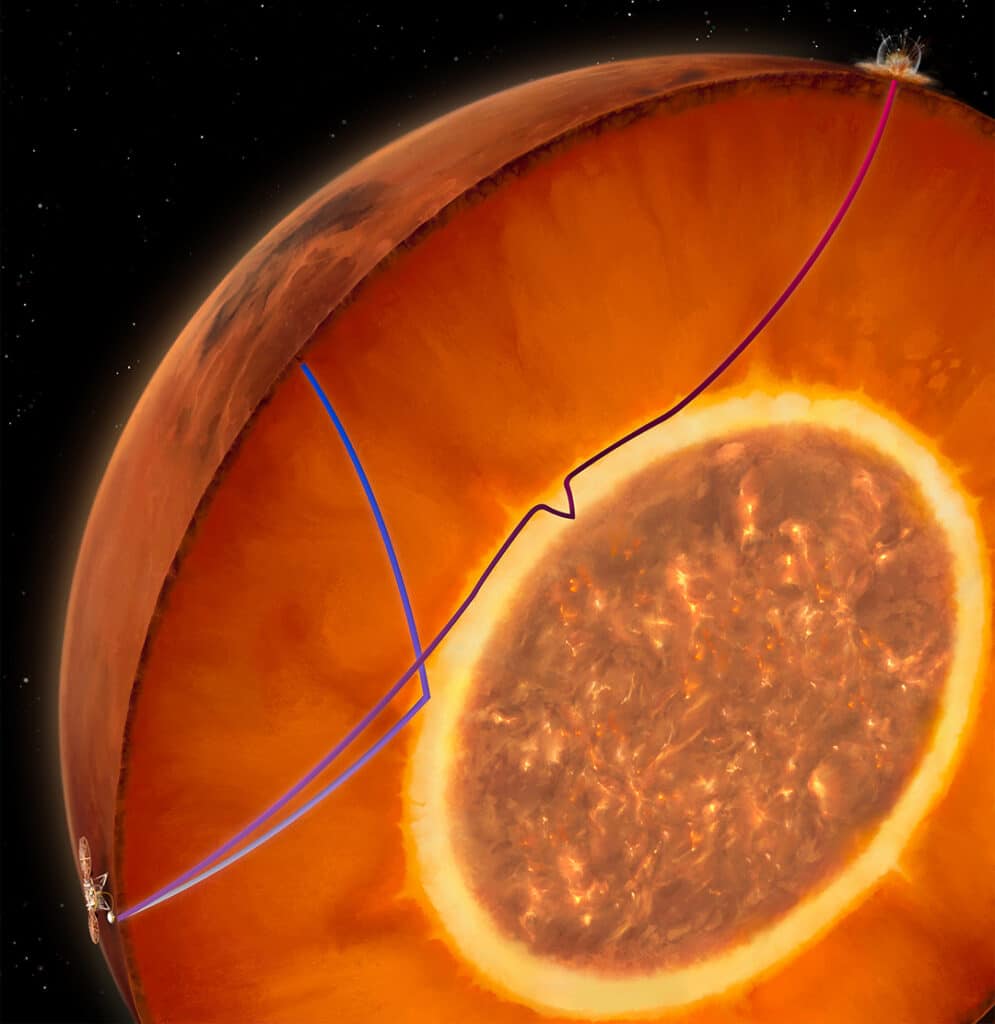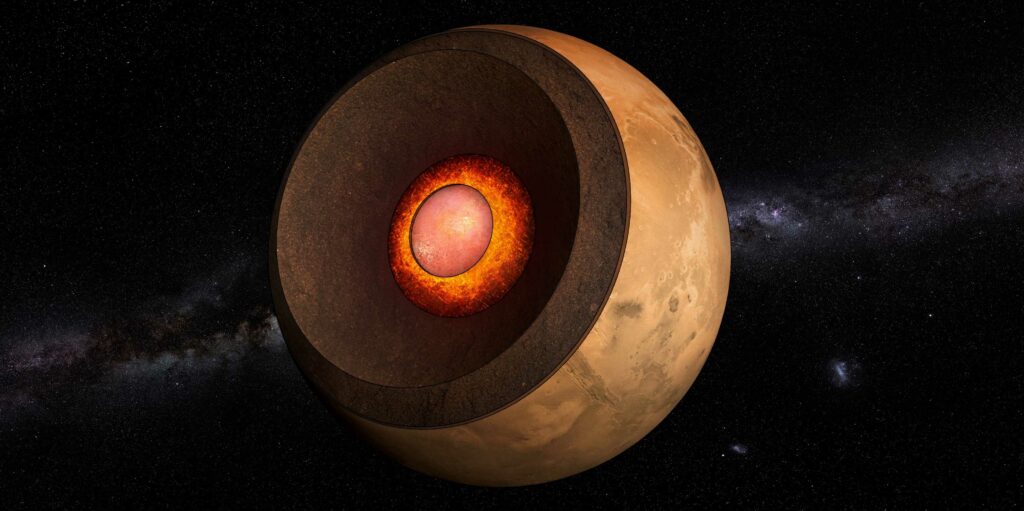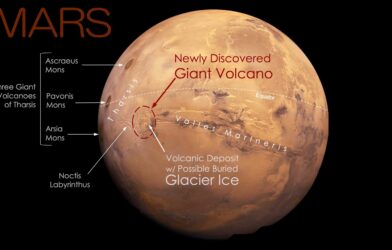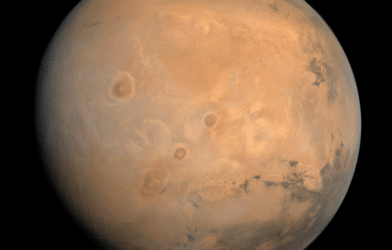A Martian mystery has been unraveled thanks to NASA’s Insight lander. Researchers have discovered that Mars’ liquid iron core is smaller and denser than previously thought. It’s also surrounded by a layer of molten rock. These findings prompt a reevaluation of previous models about the planet’s formation and history.
NASA’s InSight mission, which ended in December 2022, had spent more than four years collecting valuable data on Mars. Analyzing the InSight seismometer data, an international team of researchers discovered a molten silicate layer, similar to a “heating blanket,” lying between Mars’ mantle and core.
“The blanket not only insulates the heat coming from the core and prevents the core from cooling, but also concentrates radioactive elements whose decay generates heat,” says Vedran Lekic, a professor of geology at the University of Maryland, in a statement. “And when that happens, the core is likely to be unable to produce the convective motions that would create a magnetic field—which can explain why Mars currently doesn’t have an active magnetic field around it.”
The absence of a protective magnetic field has profound implications for Mars’ habitability and atmospheric history, rendering it vulnerable to solar winds and stripping it of surface water necessary to sustain life. These findings also invite comparisons between Earth and Mars, emphasizing the divergence in their evolutionary paths. “Earth doesn’t have a completely molten silicate layer like that,” says Amir Khan, a Senior Scientist at ETH Zurich, in a media release.
This finding has resolved a long-standing mystery regarding the size and composition of Mars’ core.

‘Bordering On The Impossible’
This finding also brings a resolution to the puzzle regarding the Martian core’s composition. Previous analysis of marsquakes had suggested that the Martian core had a significantly lower average density than pure liquid iron. On Earth, the core consists of approximately 90 percent iron by weight, with light elements like sulfur, carbon, oxygen, and hydrogen making up the remaining 10 percent by weight. Initial estimates for the density of the Martian core indicated a much larger proportion of light elements, around 20 percent by weight, which puzzled researchers.
“This represents a very large complement of light elements, bordering on the impossible. We have been wondering about this result ever since,” explains Dongyang Huang, a postdoctoral researcher in the Department of Earth Sciences at ETH Zurich.
These latest observations show that the radius of Mars’ core is smaller than initially thought, falling in the range of 1,650–1,700 kilometers, approximately 50 percent of Mars’ radius. “This means that the average density of the Martian core is still somewhat low, but no longer inexplicable in the context of typical planet formation scenarios,” adds Paolo Sossi, Assistant Professor at ETH Zurich.
According to the new calculations, the proportion of light elements in the Martian core now ranges between 9 and 14 percent by weight.
InSight’s Mars Insight Mission ‘Very Successful’
The study also highlights the importance of a seismic event that occurred in August and September 2021 when the InSight lander’s seismometer recorded two quakes on the opposite side of Mars. “These quakes produced seismic waves that traversed the core,” explains Cecilia Duran, a doctoral student in the Department of Earth Sciences at ETH Zurich. “This allowed us to illuminate the core.”

Despite the InSight mission’s end, the analysis of its observations continues to reshape our understanding of Mars. “This new discovery of a molten layer is just one example of how we continue to learn new things from the completed InSight mission,” Lekic says. Researchers are hopeful that these insights will guide future explorations, potentially extending to other celestial bodies like the moon and Venus.
Unfortunately, limitations such as dusty solar panels and reduced power prevented the InSight lander from providing additional data on Mars’ interior composition and structure.
“Yet, InSight was a very successful mission that provided us with a lot of new data and insights that will be analysed for years to come,” concludes Khan.
The study is published in the journal Nature.












